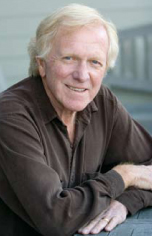The fire started around two o’clock in Mill Valley, on a hillside in West Blithedale Canyon. The area was heavy with pines parched from a dry winter. By three o’clock—pushed by winds gusting to 60 miles per hour—flames had jumped to Throckmorton Ridge and were heading downtown. Residents fled on narrow roads, their cars clogging the way for fire trucks rushing to douse the flames. The burn lasted two days. By the end, 117 homes were lost and more than 2,500 acres scorched. Luckily, no one died.
That fire occurred nearly 80 years ago. A sudden shift in winds kept the destruction from being much worse. Today, as Marin’s warmest days approach, fire officials are warning that a similar fire is likely—and the potential devastation much greater. “Marin’s hillside communities were designed with little consideration for fire danger,” says Kent Julin, a forester with the Marin County Fire Department. Three conditions elevate the peril of fire this year: A winter of less-than-normal rainfall—36 compared to the typical 50 plus inches; greater concentration of brush than ever before—the result of nonnative plant infestation; and considerable amounts of dry leaves and branches—the dead debris of Sudden Oak Death Syndrome.
There’s one more factor: people. “Home owners in these areas value their privacy,” Julin says. “They’ve planted pines, firs and cypress for screening purposes, which only increases the fire danger to their homes.”
The 16 directors of FIRESafe Marin—a nonprofit formed following the 1991 Oakland/Berkeley firestorm that killed 25 people and destroyed nearly 3,000 homes (one every 11 seconds)—are so concerned about a wildfire that they’ve produced a DVD, Marin on Fire—Preparing for the Next Urban Wildfire.
“The conditions that existed in Oakland in 1991,” says narrator Peter Coyote, “exist in Marin today.” The 30-minute DVD explores the damage flying embers can inflict, what plantings a home owner should eliminate, and how using untreated wood shingles on roofs and sidings “is like covering your home with kindling.” Marin on Fire is available for $20.26 (tax and shipping included) from FIRESafe Marin, 415.446.4420 or firesafemarin.org. Think of it as an investment in the future. As Coyote concludes, “Once your home is destroyed by wildfire, it’s too late to plan for prevention.”
As for planning for any type of natural disaster, the two key words are Get Ready. “It’s a two-hour class that teaches you how to take care of yourself and your family for five to seven days in the event of a fire, flood or earthquake,” says Laurie Nilsen, Tiburon’s emergency services coordinator. The instigator of the program was Belvedere physician Tom Cromwell, who did volunteer work in New Orleans following Hurricane Katrina. “Most injuries and sickness came from people being isolated in their homes for long periods of time with no food, no power, no water—things we need every day,” Cromwell says.
More than 2,500 residents of the Tiburon Peninsula have already taken Get Ready training. In September GET READY classes will be given throughout Marin.
“Get Ready is big and it’s getting bigger all the time,” says Corte Madera Fire Chief Bob Fox, who’s secured funding (including $200,000 from the Department of Homeland Security) from communities and groups throughout Marin and is the countywide chairman of the effort. Fox says 700 banners will soon be up and special events—such as a dinner at Sam’s Anchor Cafe in Tiburon or a chicken barbecue in the Corte Madera Rec Center—will follow the two-hour Get Ready class.
The power point presentation and Marin- specific manual cover basic first aid, utility shut off, how to gather and store a week’s worth of food and water and the importance of knowing neighbors prior to the time a natural disaster strikes. Is there a better investment of two hours than this? I doubt it. Class schedules can be found at getreadymarin.org.
In Marin, it’s easy to think the loveliness will go on forever. Let’s hope it does. Let’s also be realistic: a warm windy day and one careless act in heavily forested Marin can suddenly change everything, as would a slight shift in the nearby San Andreas Fault. Watching Marin on Fire and attending a Get Ready course are essential to responsible living in Marin.
That’s my point of view. What’s yours?
Email [email protected]


